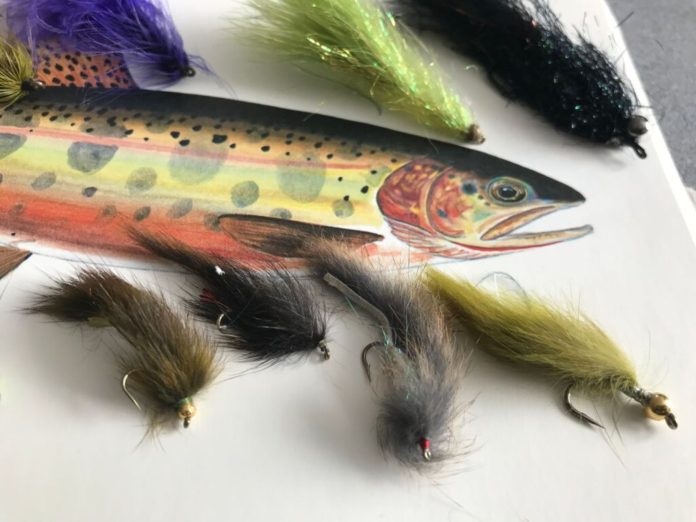Michael Salomone/Courtesy photo
When I was young we had a cabin in northern Wisconsin where my dad would invite his childhood friends to come and fish. One such friend had a fear for the leeches we used regularly for bait. He would bribe my brothers and I into baiting his hook with an M&M barter for every leech. He would dole out an M&M or two into our worm-dirt and fish-slimed hand — seemed like a good deal at the time.
It taught us was that everything in the water eats a leech.
Those early experiences influenced my fly-angling. Now, I regularly target trout with leech-pattern flies which have produced some substantial results. The incredible variety of presentations an angler can employ when fly-fishing a leech is tremendous and they all produce, a testament to the reliability of leech-pattern flies.
Leeches are eyeless, undulating, protein jelly beans. Trout find them irresistible. There is no “leech hatch” so to speak, like mayflies, caddis and stoneflies. However, there are times of increased activity. After a long, cold winter, spring brings about the warming temperatures that spurn along activity.
Unlike worms and eggs which lack locomotion, leeches actively swim. They move with an enticing action trout will recognize from great distances in clear water. Trout also target swimming leeches in stained, off-colored water as well. It is the ribbon-like pulsating motion that draws strikes even in the mud.
From dull, natural tones to bright, unnatural hues, leech flies come in a variety of colors. Fly-tyers have a huge variety of colors, materials and sizes to use to mimic leeches when they sit down at the vise. Simple rabbit strip leech patterns have worked well for years. But now with a market for synthetic fly-tying material growing daily, tyers can choose from iridescent fibers and krystal flash to imitate life.
Michael Salomone/Courtesy photo
Popular colors do revolve around dull, natural tones like brown, olive green and black. But there are times when an orange and rust, purple or burgundy leech pattern out-fishes them all. Tyers with the ability to blend colors to create a mottled look with green and brown are on the right track for a productive leech fly. An olive and black has been an Eagle River favorite and heavy producer over the years for me.
Weighted and unweighted, leech flies rely on their swimming motion to create the illusion of life necessary for success. Unweighted leech flies hold in the water column while pulsing in the current. Weighted fly patterns capitalize on an up and down motion to create the swimming action. Either way, your fly line enhances your presentation.
A sinking line does many things to your presentation that increases your chances for success. Sinking lines get the fly down deep where leeches spend the predominant amount of their time. Weighted lines have a motion that places them into the water column where they move and flow like a part of the river. These specialty lines aid in controlling the pace of your fly during a drift or retrieve. There is something special about the way a weighted line pulls and leads a leech fly through the water.
Floating fly lines help anglers in a couple of ways. A leech fly is a perfect dead drifting morsel that swims and breathes with life under a strike indicator. Nymphing a leech fly through a run is extremely effective. Anglers adept with their nymphing skills will find this presentation an easy adaptation. Fly-fishers rely more on the materials to sell the deal, not the angler manipulating the line or fly.
Fishing a leech pattern as a dropper under a large foam Chubby Chernobyl is a great floating tactic for higher water. Anglers cast towards the shore and mend their line to keep the flies close to the pockets. It is a presentation I call “bank robbing.” The big, dry fly gets its fair share of eats too but the swimming action of a leech fly held at the same level in the water column is too much for a trout to pass up.
Childhood fishing adventures with my brothers laid the foundation for my fly-angling today. Dressing up hooks with leeches as bait in a barter system only kids found attractive illustrated the effectiveness of leeches. Whether it is a weighted wooly bugger, unweighted squirrel leech or a simple rabbit strip imitation, leech flies always catch fish with or without the M&Ms.
Michael Salomone/Courtesy photo
Credit: Source link































